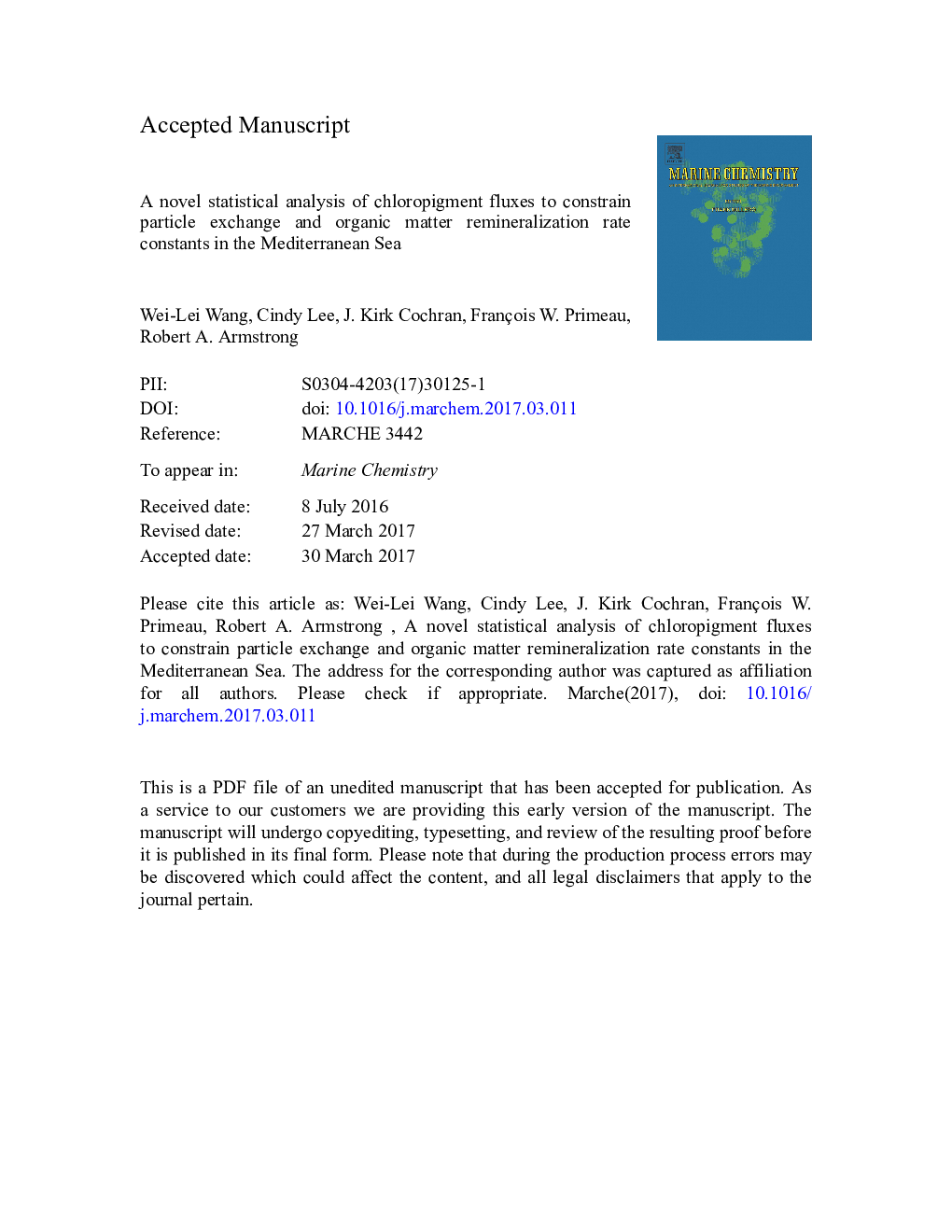| Article ID | Journal | Published Year | Pages | File Type |
|---|---|---|---|---|
| 5143659 | Marine Chemistry | 2017 | 35 Pages |
Abstract
To investigate particle dynamics, we used a 3-prong modeling approach. First we constructed a conceptual finite difference (FD) model to describe chloropigment and organic matter (OM) cycling. Second, from the FD model, we obtained a set of synthetic data; we then used Bayesian techniques to recover parameters used in the FD model to show that Bayesian techniques have the ability to make parameter estimations. Third, we built a two-layer model and applied the Bayesian approach to the data from Indented Rotating Sphere (IRS) sediment traps operating in Settling Velocity (SV) mode to estimate particle and pigment cycling rate constants. Eleven settling velocity categories collected by SV sediment traps were grouped into two sinking velocity classes (fast-sinking and slow-sinking classes) to decrease the number of parameters that needed to be estimated, with a fast/slow cutoff SV of 49 m/d adopted from previous work. The organic matter degradation rate constant was estimated to be 1.5â 0.4+ 0.5 yâ 1, which is equivalent to a degradation half-life of ~ 0.5 years. The rate constant of chlorophyll a degradation to pheopigments (sum of pheophorbide, pheophytin, and pyropheophorbide) was estimated to be 1.6â 0.3+ 0.4 yâ 1, pheopigment remineralization was 2.1â 0.5+ 0.7 yâ 1, both of which are higher than the organic matter degradation rate constant. Disaggregation/aggregation rate constants were 149.9â 99.6+ 297.3 yâ 1 and 3.2â 2.4+ 9.9 yâ 1, respectively. We compare our data with previously published thorium-based particle aggregation and disaggregation rate constants at this site and consider how this comparison can be used to explore particle exchange concepts.
Related Topics
Physical Sciences and Engineering
Chemistry
Chemistry (General)
Authors
Wei-Lei Wang, Cindy Lee, J. Kirk Cochran, François W. Primeau, Robert A. Armstrong,
